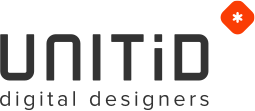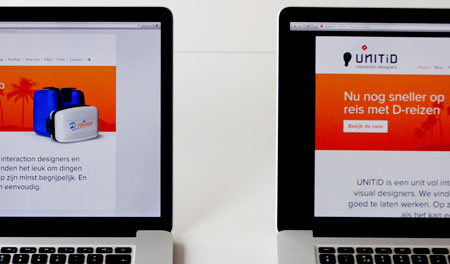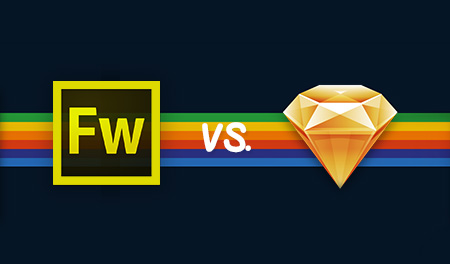Usability testing is an extremely important part of our work as designers. At UNITiD we do a lot of usability testing and are ready to share with you our approach to usability testing. We call it Nano testing.
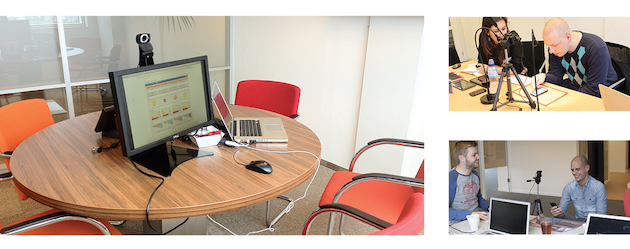
What is usability testing?
Usability testing means testing your design with users to check how well it is understood. However, there are different ways of testing, and many people have their own approach that they believe is the right way. Even their exact definitions may differ, but the main purpose is always the same: to discover any problems and strengths of a product or service, allowing you to make the product or service more user-friendly.
Why should you test?
At UNITiD, we test to discover the usability problems of a product or service (new or already working) in order to improve the design. Testing the design with users helps us to make better choices and improves our understanding of our users’ thoughts. After a couple of days (or even weeks), you lose objectivity of your own design and start to think of every part of it as sensible and obvious. Testing with users can prove to be a real eye-opener.
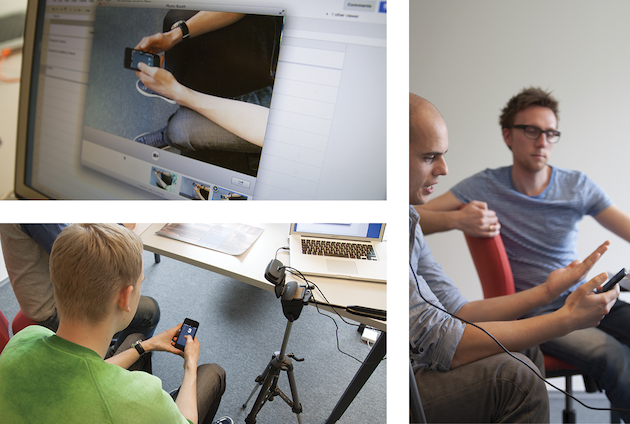
Our designers perform the tests themselves. This way, the designer can learn directly from the user’s behavior without losing time or details (which inevitably happens when other people test your designs). The tests are qualitative, done one-on-one with the user, and take place frequently during the design process. We’d rather perform many smaller tests than one big test. Continuously testing our ideas with the user creates useful feedback and improves the final design.
What do we test?
We test the top tasks of our users and sometimes specifically selected tasks. The hypothesis of the user’s behaviour in each task is written down and explicitly tested. A test takes, on average, 45 minutes and is immediately followed by a 15-minute analysis of the most important results. The number of tasks that get tested depends on their length and complexity, but on average, we test about two or three large tasks or five smaller ones.
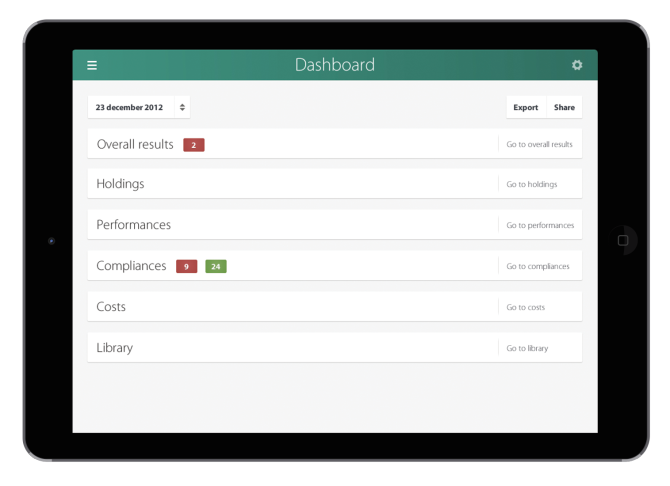
We can test the designs with rough sketches or wireframes and also with high-fidelity visual mock-ups and fully coded prototypes. It all depends on the stage of the design process that we are in. We try to avoid “the perfect prototype” and rather go for valuable test results on a less-than-perfect prototype. The test is what is most important at this point, not perfecting a prototype. The prototype should simply function as a means to get results on all the tasks of the test. So the testing really becomes part of the design process. In fact, testing is “a way of designing.”
How do we test?
The tests are done one-on-one, allowing for a pure qualitative test. Sitting next to the user allows us to ask a simple “why” on specific user actions. In half a day, we can test with three or four users. We always invite our clients to be present in the observation room during the test. This is when the client can help us prioritize design to-dos derived from the results of the tests. These to-dos will then be planned for the remainder of the design process.
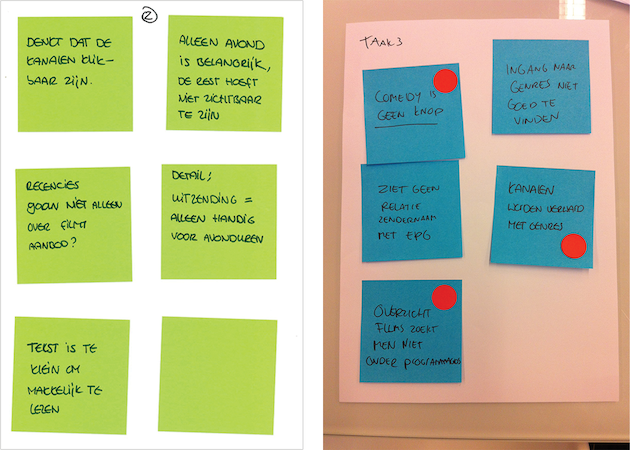
We always bring another colleague to write the minutes. Not word for word, but every interesting observation gets written on a Post-it (the client often helps as well). At the end of each test, we collect these Post-its. Together with the client, we then make a first prioritization of the most importation findings from each task (and each user) on a big sheet of paper.
After all the user tests are completed, we gather around the big sheet and decide which findings we are going to take care of.
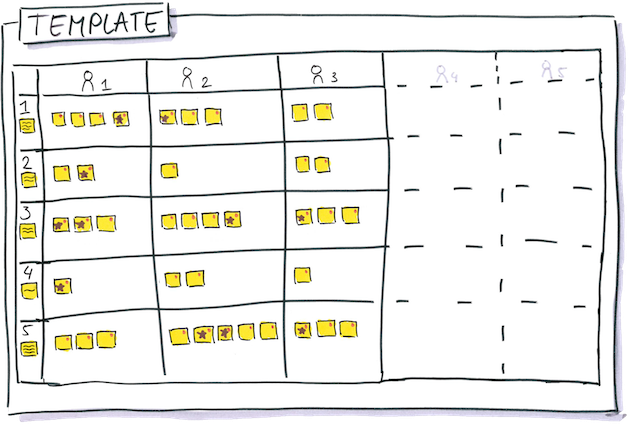
We avoid writing big reports for usability tests, so we document only the most important findings and results of the hypotheses in a report. We have made a template for this purpose, which is also being used during the preparation of the test.
With whom do we test?
It is often difficult and time-consuming to find the right users for your test. Luckily, many of our clients are well connected and can find users for the tests themselves. Otherwise, we have three solutions we can pursue:
- Finding the right kind of users through our own network, which often works surprisingly well
- With the help of specialized respondent/participant agencies
- “Hallway testing,” where we can perform many tests with colleagues or passers-by in the hall of our office or at the client’s office (e.g., in the waiting room)
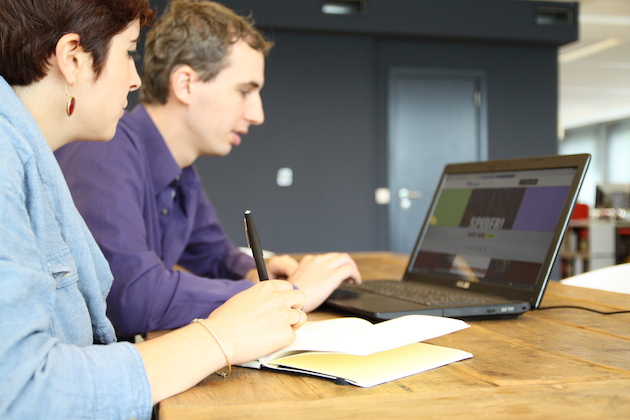
Test setup
The proper test setup depends on the location and the devices we will use in our test. Everyone at UNITiD can easily find the checklist of what to bring to the test with the help of our own tool, which shows you the required hardware and software procedures as well as the templates for each scenario.
For example, the image below illustrates the setup for a test at the client’s location on a desktop with an observation room.
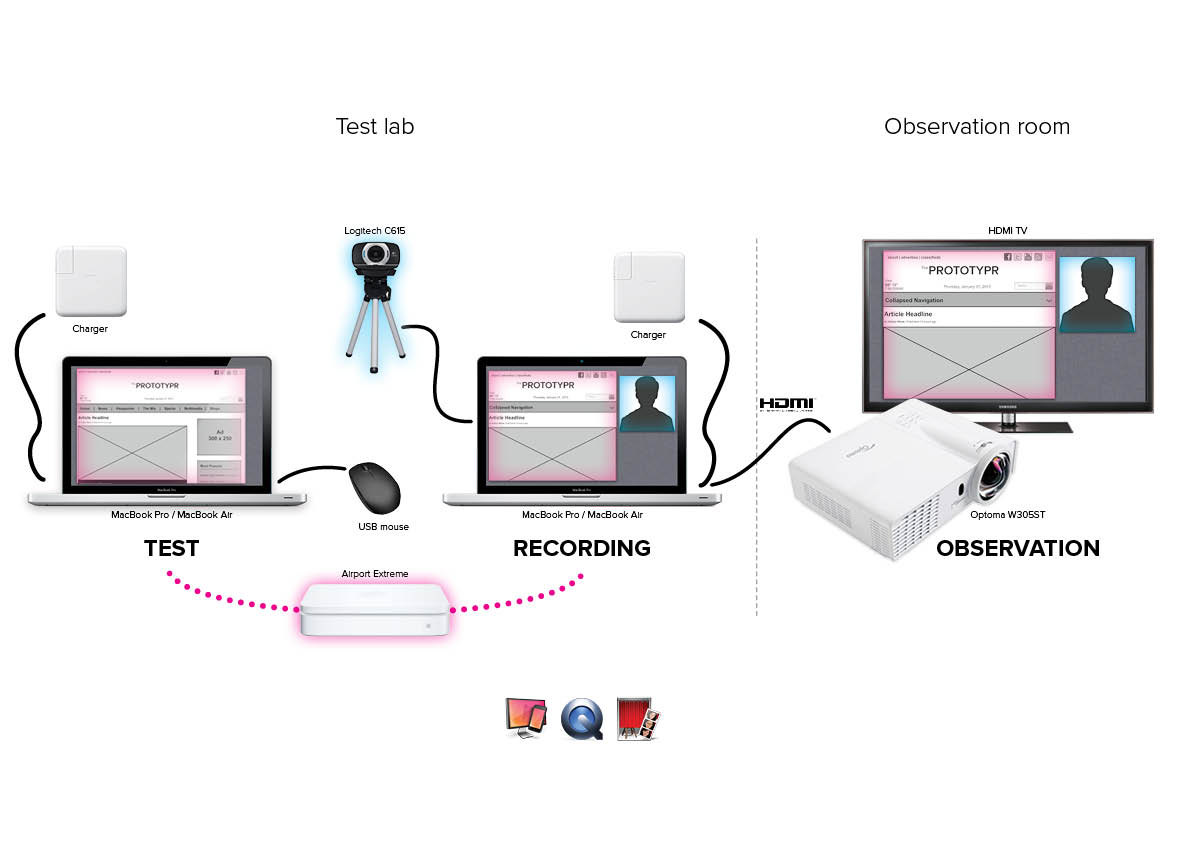
In conclusion
- Our tests are qualitative.
- We test to discover problems in a product or service so that we can improve our design.
- It is better to do many smaller tests than one big test.
- Tests should be a recurring and integral part of the design process without putting additional pressure on the process.
- The designers perform the tests themselves to learn as much as possible from the users and to avoid missing any details, which may get lost if someone else does the testing.
- Analyse your findings immediately with your client during and after testing.
- Don’t write a huge report. Keep it concise.
In short: Nano usability testing makes usability testing cost effective, valuable and easy to implement.
Any questions about usability testing? Or would you like us to help you out on some testing? Drop us a line!

